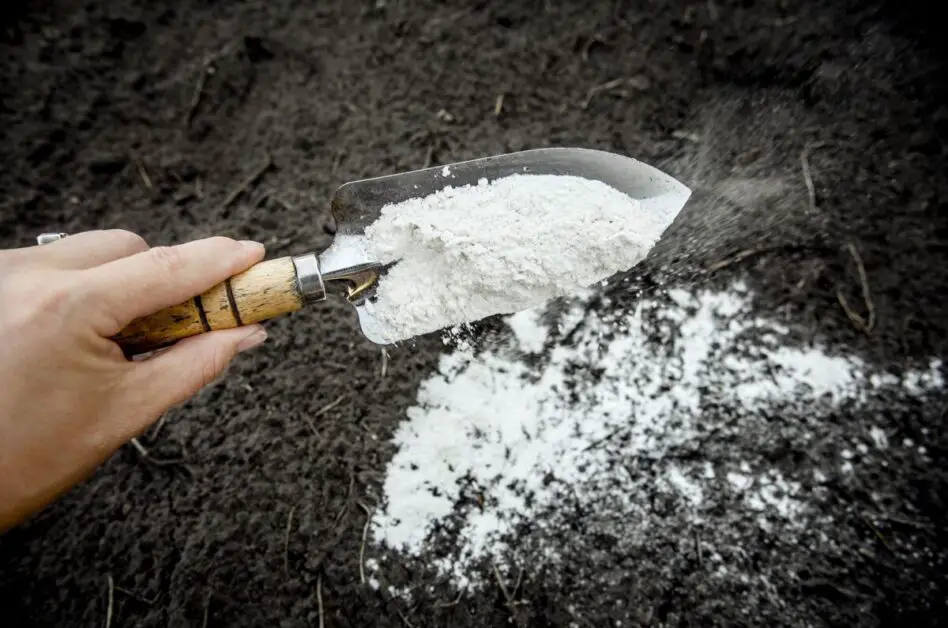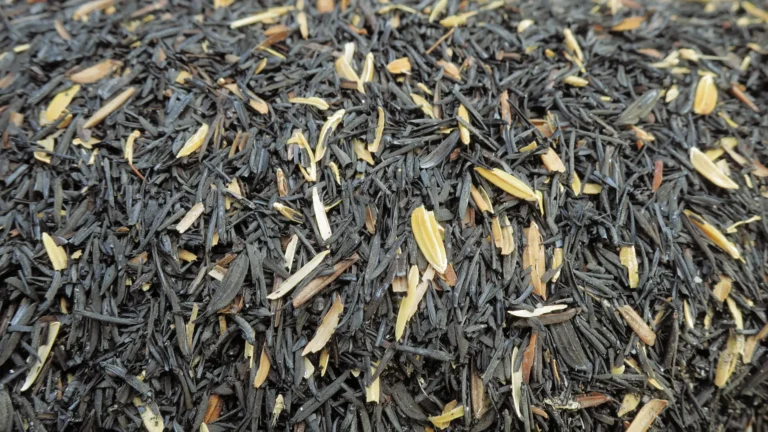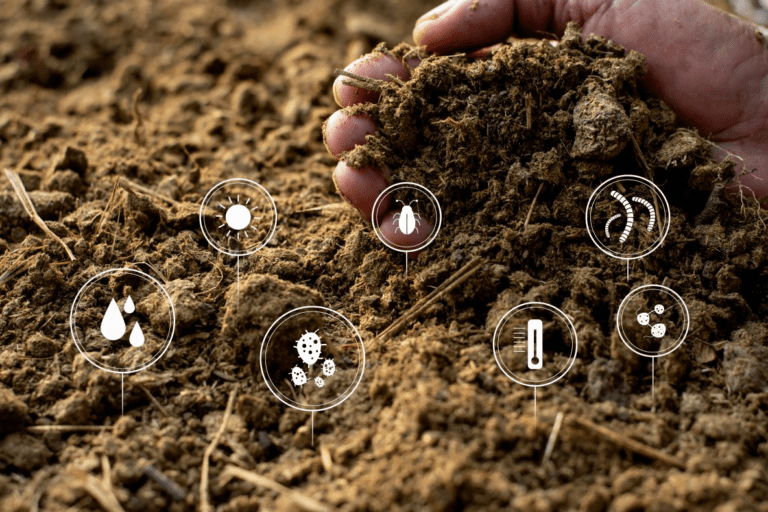Dolomite Lime for Plants: What It Is, How It Works, and How to Use It
Table of Contents
The Importance of Soil pH in Plant Health
Soil pH plays a crucial role in the overall health and growth of plants. The pH level of the soil directly affects the availability of essential nutrients to plants, as well as the activity of beneficial microorganisms. Different plants have different preferences when it comes to soil pH, with some thriving in acidic conditions while others prefer alkaline soil. It is important for gardeners and plant enthusiasts to understand the importance of soil pH and its impact on plant health in order to create optimal growing conditions for their plants.
When the soil pH is too high or too low, it can have detrimental effects on plant growth. In acidic soil, certain nutrients like calcium, magnesium, and phosphorus become less available to plants, which can lead to deficiencies and stunted growth. Conversely, in alkaline soil, the availability of nutrients such as iron, manganese, and zinc can be limited, causing similar issues. Additionally, imbalanced soil pH can disrupt the symbiotic relationship between plants and beneficial soil microorganisms that play a crucial role in nutrient cycling and plant health.
To ensure optimal plant health and growth, it is essential to maintain the right soil pH for the specific plants being cultivated. By understanding the importance of soil pH and taking appropriate measures to adjust it, gardeners can create a favorable environment for their plants to thrive.
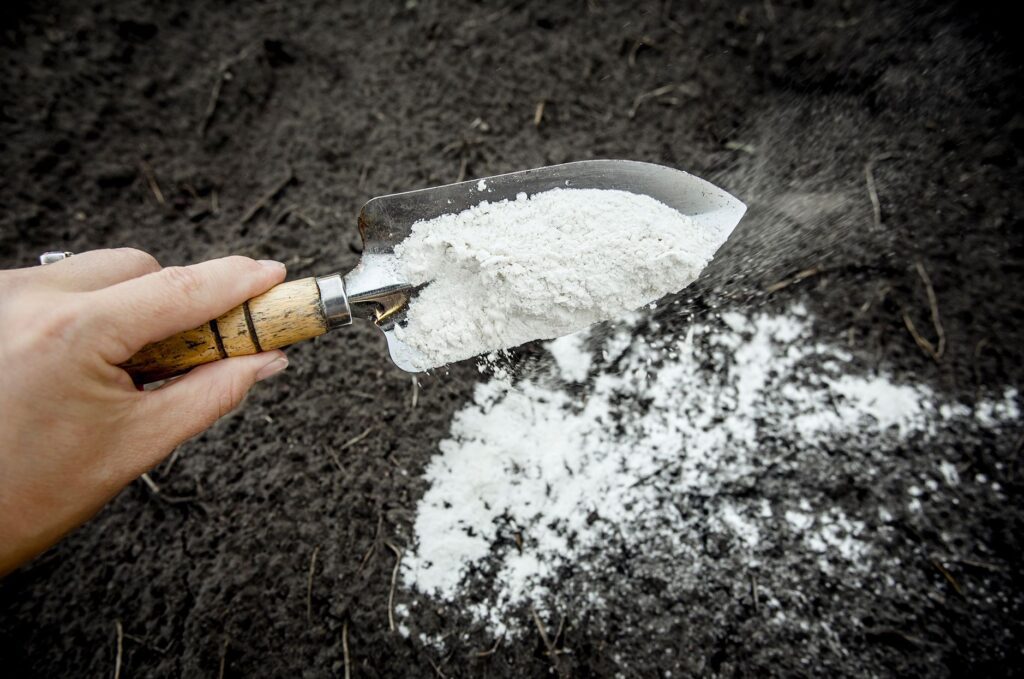
Understanding the Role of Dolomite Lime in Adjusting Soil pH
Dolomite lime plays a crucial role in adjusting soil pH, making it an essential tool for maintaining optimal plant health. With its unique composition and properties, dolomite lime acts as an effective pH buffer, helping to balance acidic or alkaline soils.
One of the primary functions of dolomite lime is to neutralize soil acidity. It contains high levels of calcium and magnesium carbonates, which react with acidic components in the soil, such as hydrogen ions. As a result, dolomite lime helps to raise the pH level of acidic soils, making them more alkaline. By doing so, it creates a more favorable environment for plant growth and nutrient absorption.
Furthermore, dolomite lime also plays a role in enriching the nutrient availability in the soil. As it breaks down, it releases calcium and magnesium ions into the soil. These essential elements are crucial for various plant metabolic processes, including the absorption and utilization of other nutrients. By promoting the availability of calcium and magnesium, dolomite lime ensures that plants have access to these vital nutrients, leading to healthier growth and improved overall performance.
In the next section, we will delve into the composition and properties of dolomite lime, shedding light on its unique characteristics and why it is an invaluable asset for gardeners and farmers alike.
The Composition and Properties of Dolomite Lime
Dolomite lime is a naturally occurring compound that is derived from limestone. It is composed of calcium carbonate and magnesium carbonate, with a typical ratio of approximately 50:50. The composition of dolomite lime makes it a valuable tool in modifying soil pH levels, as it contains both acidic and alkaline properties. This unique combination allows for effective adjustment of soil acidity or alkalinity, making it a versatile and essential substance in gardening and agricultural practices.
Aside from its composition, dolomite lime also possesses several properties that contribute to its effectiveness in balancing soil pH. Firstly, it is highly soluble in water, which means that it can easily dissolve and disperse throughout the soil. This solubility ensures that the dolomite lime is readily available to react with the soil, effectively neutralizing acidic or alkaline conditions. Furthermore, dolomite lime has a slow-release characteristic, providing a long-lasting impact on soil pH levels. This slow-release property allows for sustained changes in pH, ensuring that plants have ample time to adjust and thrive in the optimized soil environment. Overall, the composition and properties of dolomite lime make it a valuable resource in maintaining and improving soil health for successful plant growth.
How Dolomite Lime Works to Balance Soil pH
Dolomite lime plays a crucial role in balancing soil pH, ensuring optimal conditions for plant growth and development. The mechanism behind dolomite lime’s ability to balance pH lies in its chemical composition. Dolomite lime is a naturally occurring carbonate mineral that contains high levels of calcium and magnesium. When applied to acidic soil, the calcium carbonate component of dolomite lime reacts with the soil’s hydrogen ions, effectively neutralizing the acidity and increasing the pH level.
Furthermore, dolomite lime also releases magnesium ions into the soil, which provide additional benefits for plants. Magnesium is an essential nutrient for chlorophyll production, which is vital for photosynthesis. By supplying plants with an adequate amount of magnesium, dolomite lime enhances their ability to convert sunlight into energy and, consequently, promotes healthy growth. Moreover, the presence of calcium and magnesium ions in the soil improves the structure and increases the cation exchange capacity, allowing the soil to retain more essential nutrients for plant uptake.
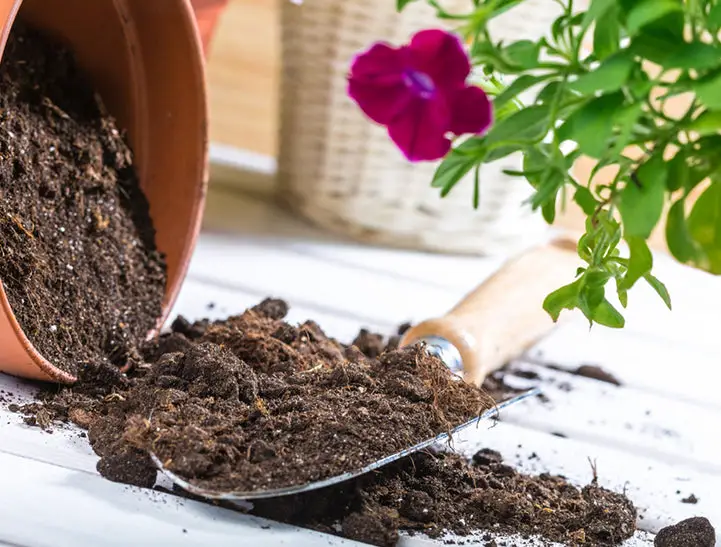
The Benefits of Using Dolomite Lime in Plant Growth and Development
Dolomite lime has long been recognized for its numerous benefits in promoting plant growth and development. Its impact on soil pH balance is a crucial factor that directly contributes to the overall health of plants. By ensuring the soil pH level remains within the optimum range for a particular plant species, dolomite lime helps to create an ideal environment for nutrient absorption and root development.
Furthermore, dolomite lime acts as a natural source of calcium and magnesium, two essential nutrients for plant growth. Calcium plays a pivotal role in cell division, enzyme function, and overall plant structure, while magnesium aids in chlorophyll production and photosynthesis. The availability of these vital nutrients is significantly enhanced by the application of dolomite lime, leading to improved overall plant health and vigor.
Overall, the benefits of using dolomite lime in plant growth and development cannot be overstated. Its ability to balance soil pH, provide essential nutrients, and enhance nutrient availability makes it an invaluable tool for gardening enthusiasts. By incorporating dolomite lime into their gardening practices, individuals can ensure that their plants receive the necessary support to thrive and flourish.
| Benefit | Description |
|---|---|
| pH Regulation | Dolomite lime helps regulate soil pH by neutralizing acidic soils, creating a more suitable environment for plant growth. |
| Calcium and Magnesium Source | Dolomite lime provides essential calcium and magnesium nutrients to plants, aiding in cell development, photosynthesis, and overall growth. |
| Nutrient Absorption Enhancement | The presence of calcium and magnesium from dolomite lime enhances the absorption of other essential nutrients, promoting healthier plant development. |
| Improved Soil Structure | Dolomite lime contributes to improved soil structure by preventing soil compaction, enhancing water retention, and promoting better root penetration. |
| Reduction of Aluminum Toxicity | Dolomite lime can help reduce aluminum toxicity in acidic soils, making it easier for plants to access nutrients and thrive. |
| Enhanced Fertilizer Efficiency | When used alongside fertilizers, dolomite lime can enhance their efficiency by optimizing nutrient uptake and utilization by plants. |
| Resistance to Plant Diseases and Pests | Adequate calcium levels supplied by dolomite lime can help plants develop stronger cell walls, making them more resistant to diseases and pest infestations. |
| Improved Nutrient Availability Over Time | Dolomite lime releases calcium and magnesium slowly into the soil, providing a sustained nutrient source for plants over an extended period. |
| Environmental Sustainability | Dolomite lime is a naturally occurring mineral and is environmentally friendly compared to synthetic alternatives, contributing to sustainable agriculture practices. |
Dolomite Lime as a Natural Source of Calcium and Magnesium
Dolomite lime is a natural source of calcium and magnesium, two essential nutrients for plant growth and development. Calcium plays a vital role in cell division, cell wall formation, and nutrient uptake in plants. It also helps in the activation of enzymes that are responsible for various biochemical reactions. Magnesium, on the other hand, is an important component of chlorophyll, the green pigment responsible for photosynthesis. It also aids in the synthesis of nucleic acids and proteins, which are essential for plant growth and reproduction.
Adding dolomite lime to the soil can be an effective way to provide a natural and balanced supply of calcium and magnesium to plants. Unlike synthetic fertilizers, dolomite lime releases these nutrients slowly and steadily, ensuring a consistent supply over a longer period. This slow-release property is particularly beneficial for plants with long growth cycles, such as fruit trees or perennial flowers. Furthermore, dolomite lime contains other trace elements like iron and manganese, which are also essential for plant growth. By incorporating dolomite lime into the soil, gardeners can promote optimal nutrient uptake and ensure healthy, vigorous plants.
How Dolomite Lime Enhances Nutrient Availability in Soil
Dolomite lime plays a crucial role in enhancing nutrient availability in the soil. When dolomite lime is applied to acidic soils, it acts as a natural pH buffer, neutralizing the acidity and creating a more favorable environment for nutrient uptake by plants. This is particularly important because nutrient availability is dependent on soil pH, with many essential nutrients becoming less accessible to plants in acidic conditions.
In addition to neutralizing soil acidity, dolomite lime also provides essential nutrients, such as calcium and magnesium, which are vital for plant growth and development. These nutrients are released slowly over time, ensuring a continuous supply for plants. Calcium, for instance, plays a crucial role in cell wall development, nutrient absorption, and enzyme activation, while magnesium is involved in chlorophyll production, photosynthesis, and energy transfer within the plant. By supplying these nutrients, dolomite lime promotes overall plant health and maximizes nutrient availability for optimal growth and productivity.
Choosing the Right Type and Quality of Dolomite Lime for Your Plants
When it comes to choosing the right type and quality of dolomite lime for your plants, there are a few important factors to consider. Firstly, it’s crucial to determine the specific needs of your plants and the characteristics of your soil. Different plants require different pH levels to thrive, so knowing your soil’s pH is essential in making an informed decision.
Secondly, it’s important to select a high-quality dolomite lime product. Look for reputable brands that are known for their expertise in producing agricultural lime. Quality dolomite lime should be finely ground and free of impurities, such as excessive amounts of clay, sand, or other minerals that may affect its effectiveness.
To ensure you choose the right type and quality of dolomite lime, consider consulting with a soil testing laboratory or an experienced horticulturist. They can provide valuable insights into the specific needs of your plants and recommend the most suitable dolomite lime product for your soil. Remember, selecting the right type and quality of dolomite lime is the foundation for achieving optimal soil pH and ensuring the healthy growth of your plants.
Testing Soil pH and Determining the Need for Dolomite Lime
Testing the pH level of your soil is an essential step in determining the need for dolomite lime in your garden. Soil pH plays a crucial role in the overall health and growth of plants, as it directly affects nutrient availability and microbial activity. pH testing allows you to understand whether your soil is acidic, neutral, or alkaline, helping you make informed decisions regarding soil amendments.
There are various methods available for testing soil pH, ranging from DIY home test kits to more advanced laboratory analysis. Home test kits are readily accessible and provide a quick and convenient way to get a general idea of your soil’s pH level. These kits typically involve mixing soil samples with a testing solution and waiting for color changes to indicate the pH. While they offer a rough estimate, it is important to note that they may not be as accurate as laboratory analysis. Therefore, for more precise results, it is advisable to send soil samples to a reputable soil testing laboratory. Their professional analysis will provide detailed information on your soil’s pH level, along with other essential nutrient levels and recommendations for appropriate amendments.

Proper Application Methods for Dolomite Lime in the Garden
When it comes to applying dolomite lime in your garden, proper application methods are crucial to ensure optimal results. The first step is to determine the recommended dolomite lime dosage based on your soil pH and the specific plants you are cultivating. You can easily test the soil pH using a soil testing kit or by sending a soil sample to a laboratory for analysis. Once you have the necessary information, you can calculate the amount of dolomite lime needed to adjust the pH to the desired level.
After determining the dosage, it is important to evenly distribute the dolomite lime throughout the garden. This can be done by spreading the lime manually or using a spreader for larger areas. It is advisable to wear protective gloves and a dust mask during the application process, as dolomite lime can be irritating to the skin and respiratory system. Furthermore, it is best to apply dolomite lime during a dry period to ensure even distribution and minimize the risk of runoff. After application, lightly water the garden to help the lime penetrate into the soil.
By following these proper application methods, you can effectively adjust the soil pH and provide your plants with the necessary nutrients for optimal growth and development. However, it is always recommended to consult with a horticulturist or agronomist for specific guidance tailored to your garden’s needs. Remember, the health of your plants starts with the health of your soil, and dolomite lime can play a vital role in maintaining the ideal pH balance for a thriving garden.
Precautions and Safety Measures when Using Dolomite Lime
When using dolomite lime in your garden or for plant care, it is important to take certain precautions and safety measures to ensure the well-being of both yourself and your plants. Dolomite lime contains calcium and magnesium, which are beneficial for plant growth, but it can also be harmful if not used correctly. Here are some guidelines to follow when handling and applying dolomite lime:
1. Always wear protective gloves, goggles, and a dust mask when handling and spreading dolomite lime. This is particularly important when working with the powdered form, as it can irritate the skin, eyes, and respiratory system.
2. Avoid inhaling the dust or getting it in contact with your skin. If you accidentally come into contact with dolomite lime, wash the affected area thoroughly with soap and water.
3. Read and follow the manufacturer’s instructions for application rates and methods. Applying too much dolomite lime can lead to an imbalance in soil pH and nutrient availability, while applying too little may not have the desired effect.
4. Keep children and pets away from areas where dolomite lime has been applied. While it is generally safe when used properly, ingestion or excessive exposure to dolomite lime can cause gastrointestinal discomfort.
By taking these precautions and following the recommended safety measures, you can safely and effectively use dolomite lime to improve soil pH and enhance plant growth. Always remember to store dolomite lime in a cool, dry place away from moisture and direct sunlight to maintain its effectiveness.
Dolomite Lime for Different Types of Plants and Crops
Different types of plants and crops have varying pH requirements for optimal growth and development. Dolomite lime can be an effective solution for adjusting soil pH and meeting the specific needs of different plants.
For acid-loving plants such as blueberries, rhododendrons, and azaleas, dolomite lime may not be suitable as it tends to increase soil pH. These plants thrive in acidic conditions, so it is best to use other soil amendments that can lower pH, such as elemental sulfur or aluminum sulfate. On the other hand, for plants that prefer neutral to alkaline soils, dolomite lime can be highly beneficial. It helps raise soil pH and provides a source of calcium and magnesium, which are essential nutrients for plant growth.
In addition, dolomite lime is particularly useful for crops that require a higher pH range, such as asparagus, cabbage, and broccoli. These plants benefit from the increased availability of nutrients in alkaline soils, promoting healthy root development and overall growth. By understanding the specific pH requirements of different plants and crops, gardeners and farmers can determine whether dolomite lime is suitable for their particular needs, ensuring optimal conditions for successful cultivation.
Common Issues and Problems with Dolomite Lime Application
Common Issues and Problems with Dolomite Lime Application
One common issue that gardeners may encounter when using dolomite lime is over-application. Dolomite lime contains high levels of calcium and magnesium, which can be beneficial for soil pH adjustment. However, applying too much dolomite lime can result in an imbalance of nutrients in the soil. This can lead to deficiencies or toxic levels of certain elements, negatively impacting plant health and growth. It is important to follow recommended application rates and conduct regular soil testing to determine the appropriate amount of dolomite lime needed for your specific soil conditions.
Another problem that may arise with dolomite lime application is its slow-release nature. Dolomite lime takes time to break down and release its nutrients into the soil. This means that immediate pH adjustments may not be achieved, requiring patience and regular monitoring. Additionally, the effectiveness of dolomite lime in adjusting soil pH may vary depending on factors such as moisture levels, soil type, and the presence of other organic matter. It is important to consider these factors and adjust application rates accordingly to ensure the desired pH balance is reached in a timely manner.
In order to avoid these issues, it is recommended to carefully read and follow the instructions provided by the manufacturer. Conducting regular soil tests to accurately assess pH levels and nutrient deficiencies is also crucial. Taking a proactive approach by incorporating dolomite lime into the soil well in advance of planting can help ensure proper nutrient availability during the growing season. By understanding and addressing the potential challenges associated with dolomite lime application, gardeners can maximize its benefits and support healthy plant growth.
| Problem | Description |
|---|---|
| Incorrect Application Rates | Applying too much or too little dolomite lime can lead to pH imbalances in the soil, affecting nutrient availability and potentially harming plants. |
| Slow Reaction Time | Dolomite lime takes time to break down and neutralize acidity in the soil, which means its effects may not be immediate, leading to delayed results. |
| Environmental Concerns | Over-application of dolomite lime can alter soil pH beyond desirable levels, impacting nearby ecosystems and water bodies due to runoff and leaching. |
| Nutrient Imbalance | Excessive use of dolomite lime can alter the balance of nutrients in the soil, potentially leading to deficiencies or toxicities in certain plants. |
| Cost Considerations | Dolomite lime application can be costly, especially for large areas, and may require regular reapplication to maintain optimal soil pH levels. |
| Soil Type Compatibility | Dolomite lime may not be suitable for all soil types; for instance, it may not be effective in soils with high clay content or where pH adjustment is minimal. |
| Application Timing | Applying dolomite lime at inappropriate times, such as during heavy rainfall or extreme temperatures, can reduce its effectiveness and waste resources. |
| Lack of Soil Testing | Failure to conduct soil tests before dolomite lime application can result in inaccurate pH adjustments and ineffective soil management strategies. |
| Potential Contamination Risk | Dolomite lime may contain impurities or heavy metals that, if present in significant quantities, could pose risks to soil health and plant growth. |
Dolomite Lime vs. Other Soil Amendments: A Comparison
Dolomite lime is often compared to other soil amendments in terms of its effectiveness and benefits for plant growth. While there are various options available, such as limestone, gypsum, and peat moss, dolomite lime offers unique advantages that make it a popular choice among gardeners and farmers.
One significant distinction of dolomite lime is its ability to not only adjust soil pH but also provide essential nutrients to plants. Unlike gypsum, which primarily focuses on pH modification, dolomite lime offers a dual function by raising pH levels and enriching the soil with calcium and magnesium. This unique combination allows for an all-in-one solution that contributes to improved plant health and vitality.
In addition to its nutrient content, dolomite lime also stands out for its gradual release properties. When compared to quick-release amendments like limestone, dolomite lime releases its nutrients over an extended period. This slow-release feature ensures a steady and continuous supply of calcium and magnesium, providing long-term benefits to the plants and soil. As a result, the use of dolomite lime can lead to sustained growth and development of plants, making it a reliable option for gardeners and agricultural practitioners.
Tips and Best Practices for Successful Dolomite Lime Application in Plant Care.
When it comes to successfully applying dolomite lime in plant care, there are a few key tips and best practices to keep in mind. Firstly, it’s important to test your soil’s pH before applying dolomite lime. This will help you determine the right amount of lime needed to achieve the desired pH level for your specific plants. Soil testing kits are readily available and provide accurate results.
Once you have determined the correct amount of dolomite lime to apply, it is essential to evenly distribute it across the soil. This can be done by using a spreader or by hand, ensuring that it is thoroughly mixed in with the topsoil. Proper distribution will guarantee that all parts of the soil receive the necessary pH adjustment, promoting uniform plant growth and development. Remember to also consider the specific needs of your plants and adjust the application rate accordingly.
What is the importance of soil pH in plant health?
Soil pH plays a crucial role in plant health as it affects nutrient availability, microbial activity, and overall plant growth and development.
How does dolomite lime work to balance soil pH?
Dolomite lime contains calcium and magnesium, which are alkaline in nature. When applied to acidic soil, it effectively raises the pH level, making the soil more neutral and suitable for plant growth.
What are the benefits of using dolomite lime in plant growth and development?
Dolomite lime provides essential nutrients like calcium and magnesium, improves soil structure, enhances nutrient availability, and promotes healthy root development, leading to improved plant growth and overall health.
How does dolomite lime enhance nutrient availability in soil?
Dolomite lime helps break down compacted soil, allowing better nutrient absorption by the plants. It also improves microbial activity, which aids in the decomposition of organic matter, releasing nutrients for plant uptake.
How do I choose the right type and quality of dolomite lime for my plants?
It is important to consider the calcium and magnesium content, particle size, and purity when selecting dolomite lime. Look for finely ground, high-quality products specifically labeled for agricultural or horticultural use.
How do I test soil pH and determine the need for dolomite lime?
Soil pH test kits or pH meters are commonly used to determine soil acidity. If the pH is below the optimal range for your plants, typically around 6-7, dolomite lime can be applied to raise the pH.
What are the proper application methods for dolomite lime in the garden?
Dolomite lime can be applied by broadcasting it evenly over the soil surface and then incorporating it into the top few inches of soil. It is important to follow the recommended application rates and guidelines provided by the manufacturer.
What precautions and safety measures should I take when using dolomite lime?
When handling dolomite lime, wear protective clothing, gloves, and a mask to prevent skin and respiratory irritation. Avoid inhaling the dust and keep it out of reach of children and pets.
Can dolomite lime be used for all types of plants and crops?
Dolomite lime is beneficial for a wide range of plants and crops, including vegetables, fruits, flowers, and ornamental plants. However, it is important to consider the specific nutrient requirements and pH preferences of each plant species.
What are some common issues and problems with dolomite lime application?
Over-application of dolomite lime can lead to excessive soil alkalinity, which may negatively impact certain plant species. It is crucial to follow the recommended application rates and regularly monitor soil pH to avoid potential issues.
How does dolomite lime compare to other soil amendments?
Dolomite lime differs from other soil amendments in terms of its composition, specifically providing calcium and magnesium. It is important to consider the specific nutrient needs of your plants and consult with experts to determine the most suitable soil amendment.
What are some tips and best practices for successful dolomite lime application in plant care?
Some tips include conducting a soil pH test before applying dolomite lime, following recommended application rates, incorporating it into the soil properly, and monitoring soil pH regularly to ensure optimal plant growth and health.

Ankit Garg is a seasoned writer at South El Monte Hydroponics, blending his passion for agriculture with a penchant for storytelling. With a degree in Agricultural Sciences from a prestigious institution, Ankit’s expertise lies in hydroponics, sustainable farming, and innovative cultivation techniques. His keen interest in exploring the intersection of technology and agriculture has led him to delve deep into the realm of hydroponic farming, where he thrives in uncovering the latest advancements and sharing insights through his engaging prose. Ankit’s dedication to promoting eco-friendly and efficient farming practices through his writing has earned him recognition within the agricultural community and beyond.

